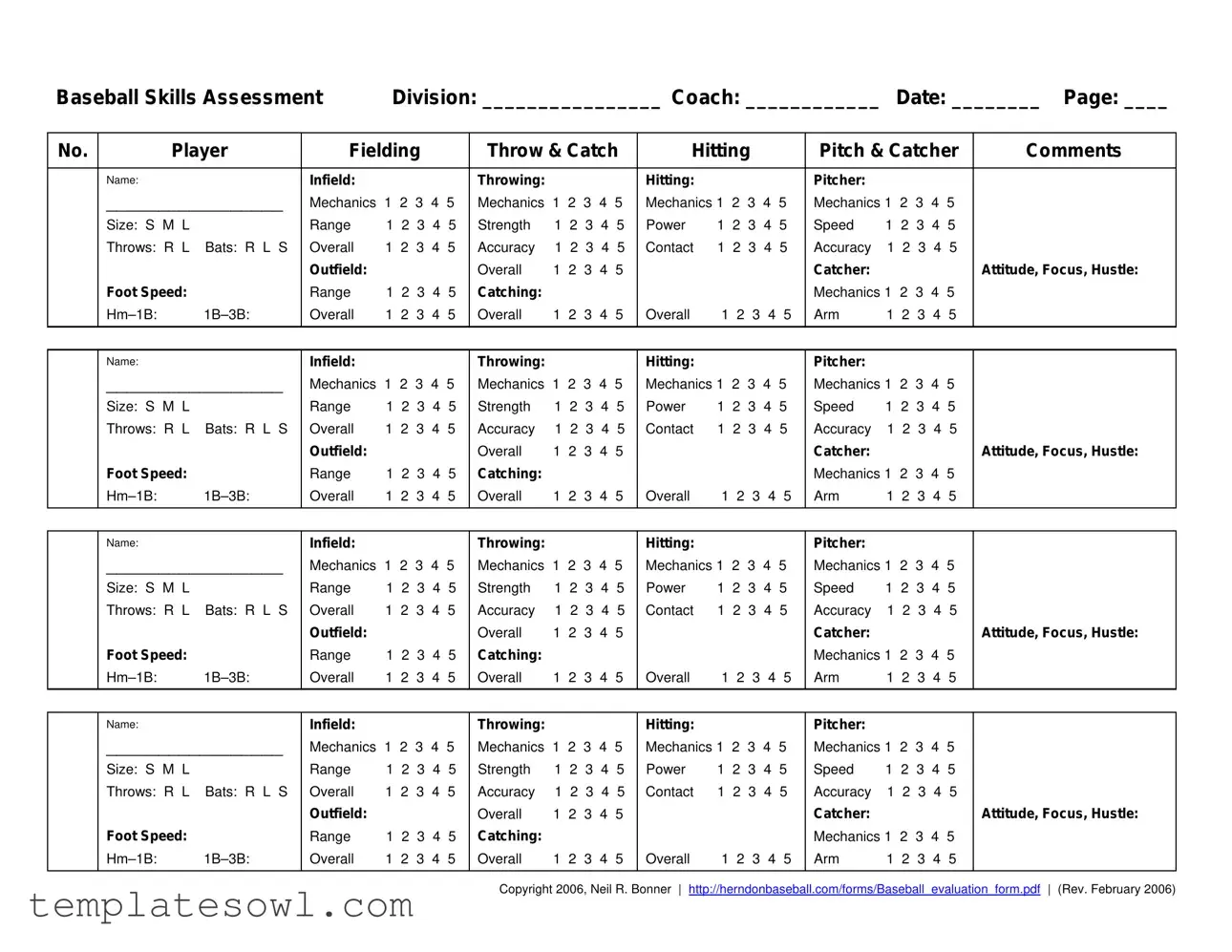What is the purpose of the Baseball Assessment Form?
The Baseball Assessment Form is designed to evaluate players' skills during tryouts and skills assessments. Coaches can use this form to score various competencies such as fielding, throwing, hitting, and pitching. It helps in providing an organized structure for the evaluation process, making it easier to compare players and select the best candidates for a team.
How do I score players on the form?
Scoring is simple. The form uses a five-point scale for each skill category. A score of five indicates exceptional ability, while a score of one reflects a low level of skill. The scores in between are used to represent various levels of proficiency. For example, a score of three would mean the player is competent but not outstanding. It's essential to be objective and fair when scoring to ensure a balanced evaluation process.
What skills are assessed on the form?
The form assesses multiple baseball skills, including fielding, throwing, hitting, pitching, and catching. Within these categories, specific areas such as mechanics, accuracy, speed, and strength are evaluated. This comprehensive approach helps coaches focus on individual skills that contribute to overall player performance.
How are tryouts structured using this form?
Tryouts are organized into various time slots, allowing for a thorough evaluation of each skill area. Activities are clearly outlined, from warm-ups to specific skill assessments like base running, infield play, outfield practice, and hitting skills. Each session is designed to provide players with an opportunity to demonstrate their abilities while also ensuring efficiency during the tryout process.
Can the assessment form be used for leagues other than All-Star teams?
Yes, while primarily aimed at All-Star travel teams, the Baseball Assessment Form is versatile enough to be used for evaluating players in house leagues and other local team selections. Its standardized approach to evaluation means it can be customized to meet the specific needs of different leagues, ensuring that all players receive fair consideration.
What should coaches keep in mind during the evaluation process?
Coaches should prioritize objectivity and fairness throughout the evaluation. Providing clear feedback to players about their performance can be beneficial. Additionally, maintaining a positive atmosphere during tryouts encourages player engagement and helps reduce anxiety. Remember to consider not only the skills but also the player's attitude, focus, and hustle, as these qualities greatly influence team dynamics.

